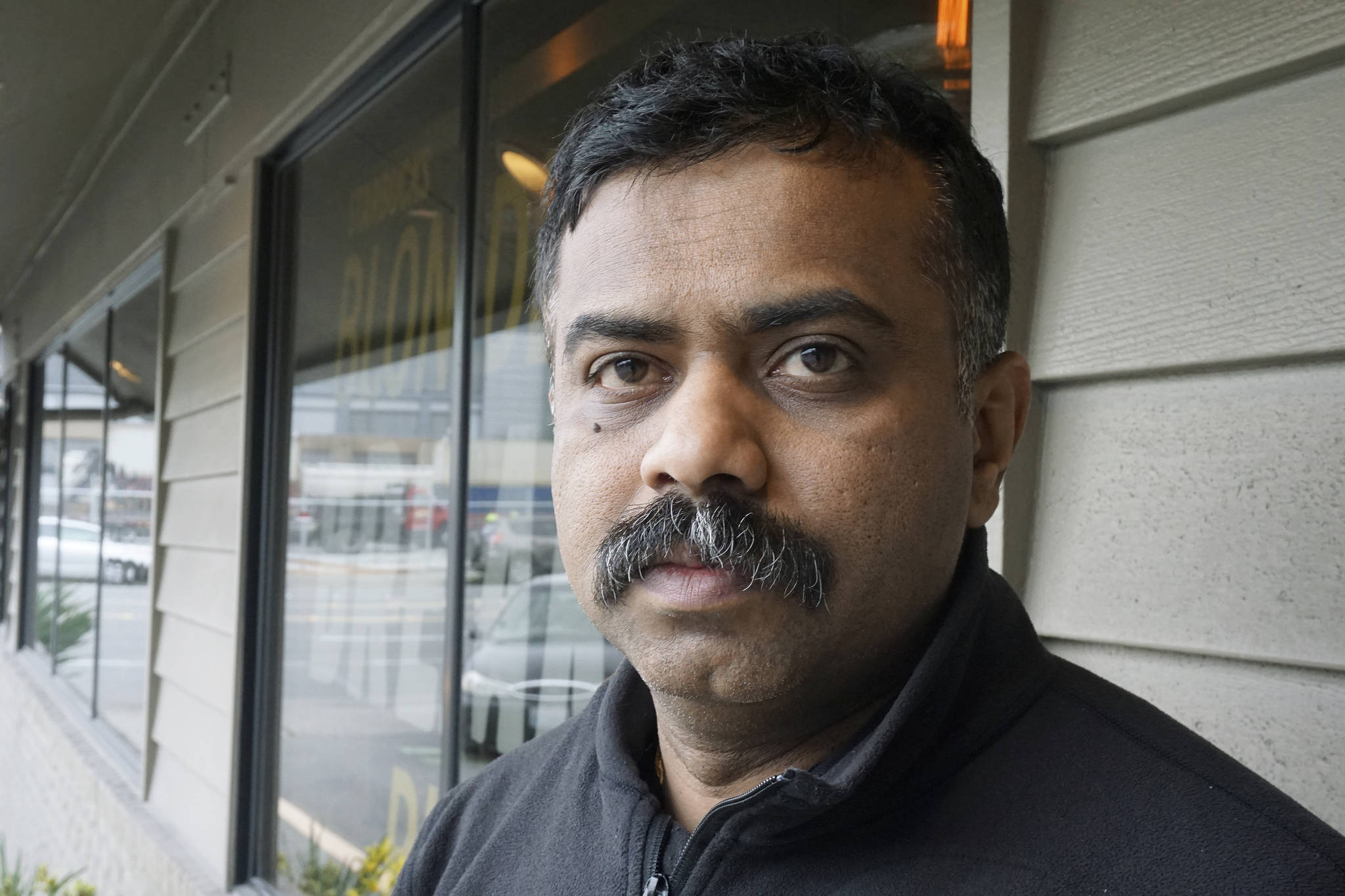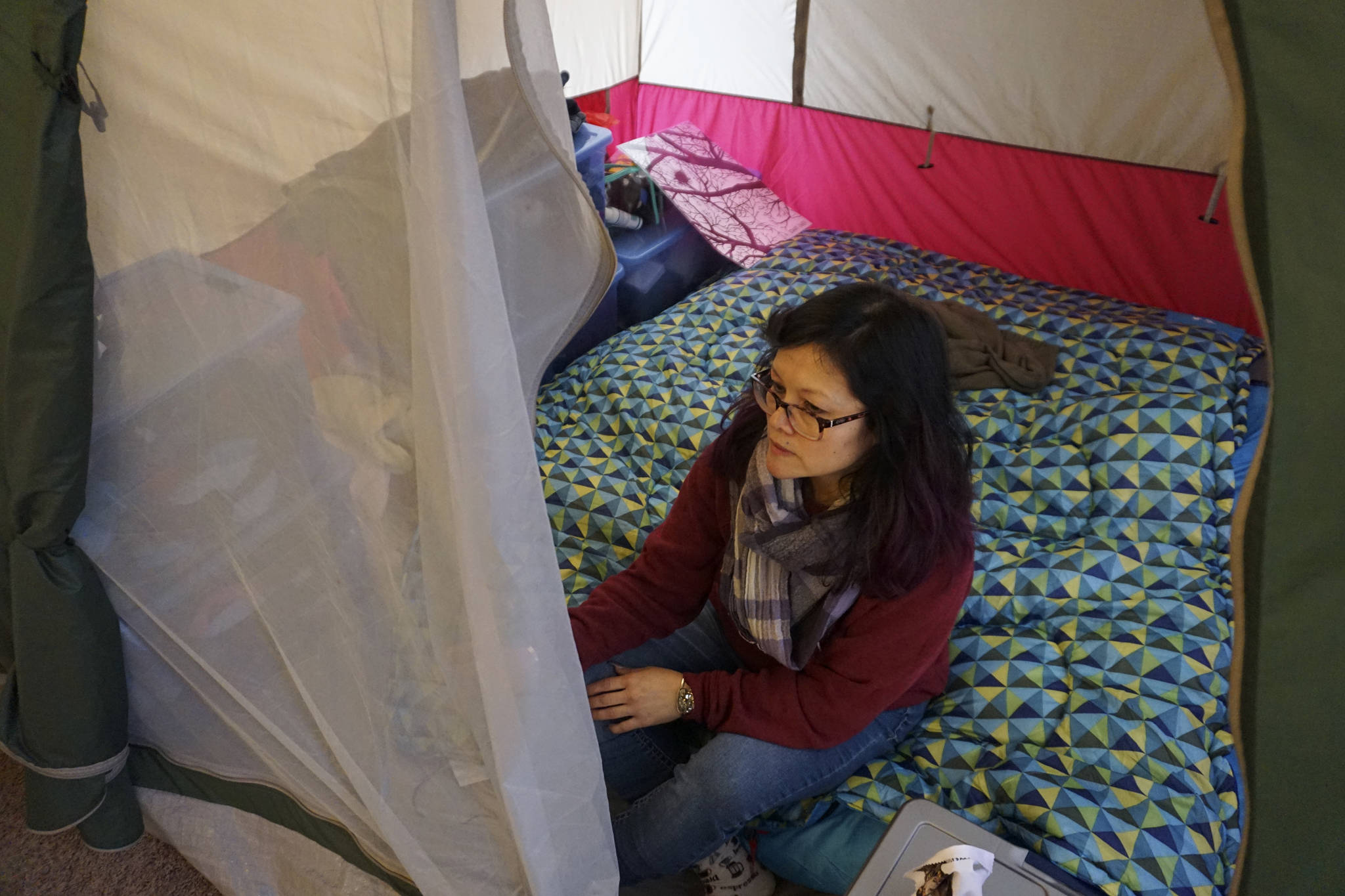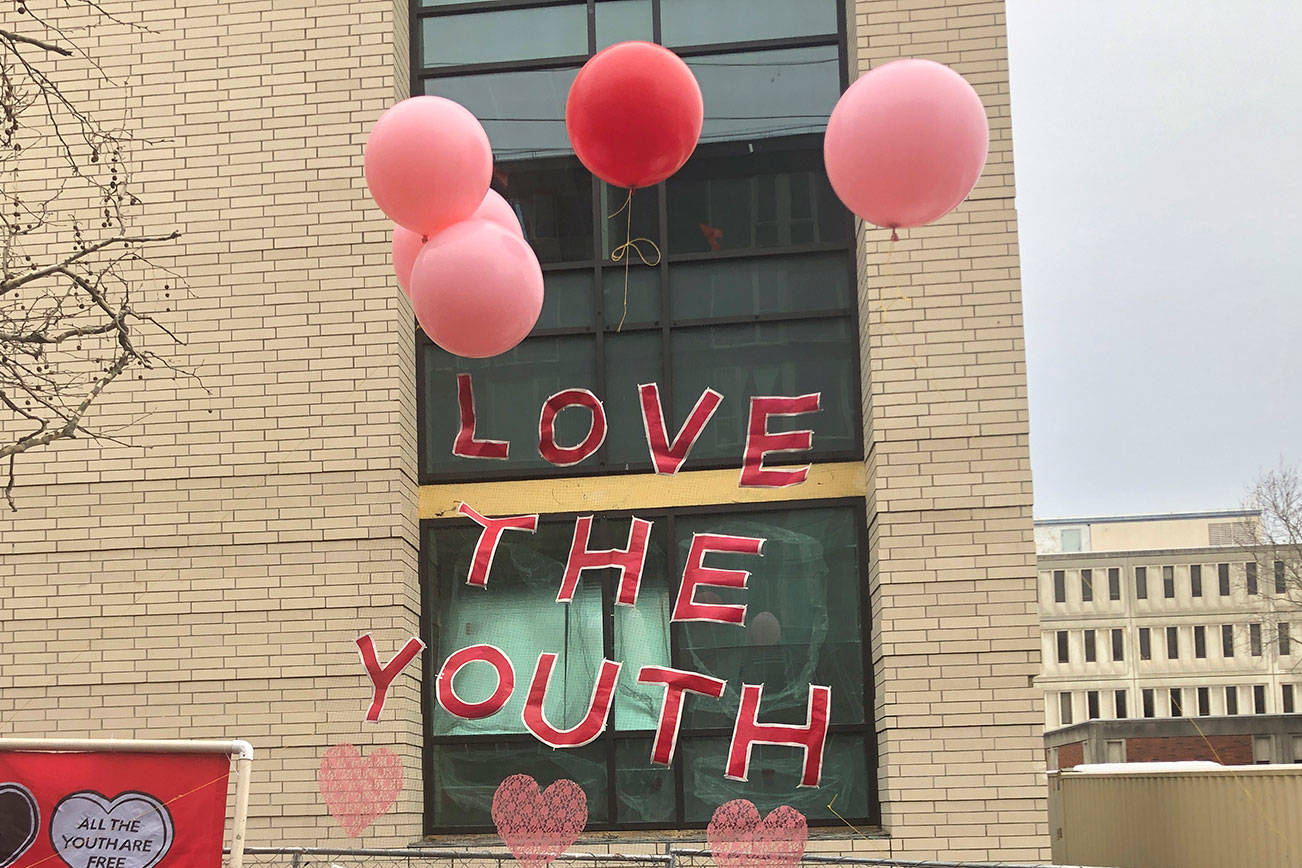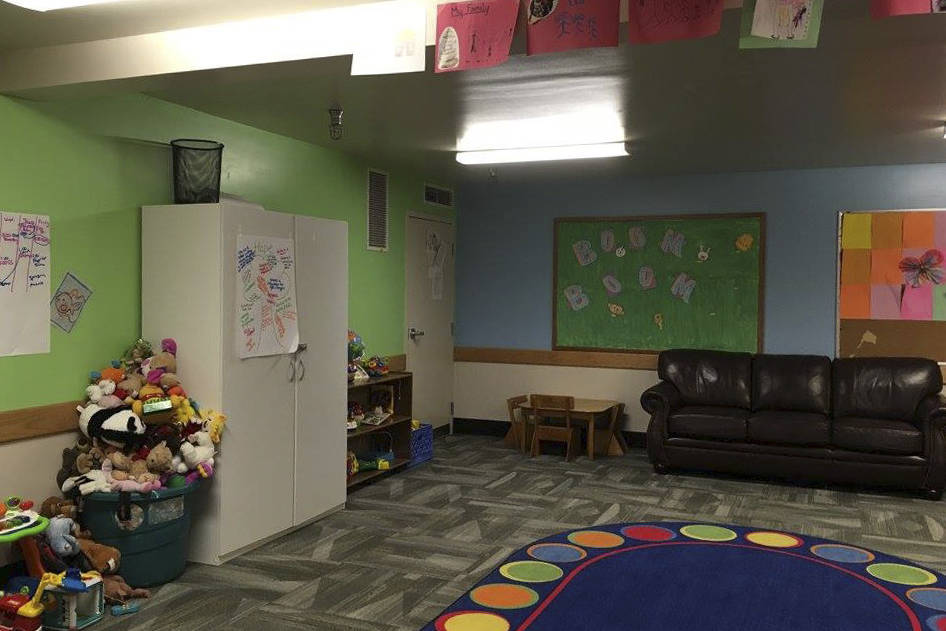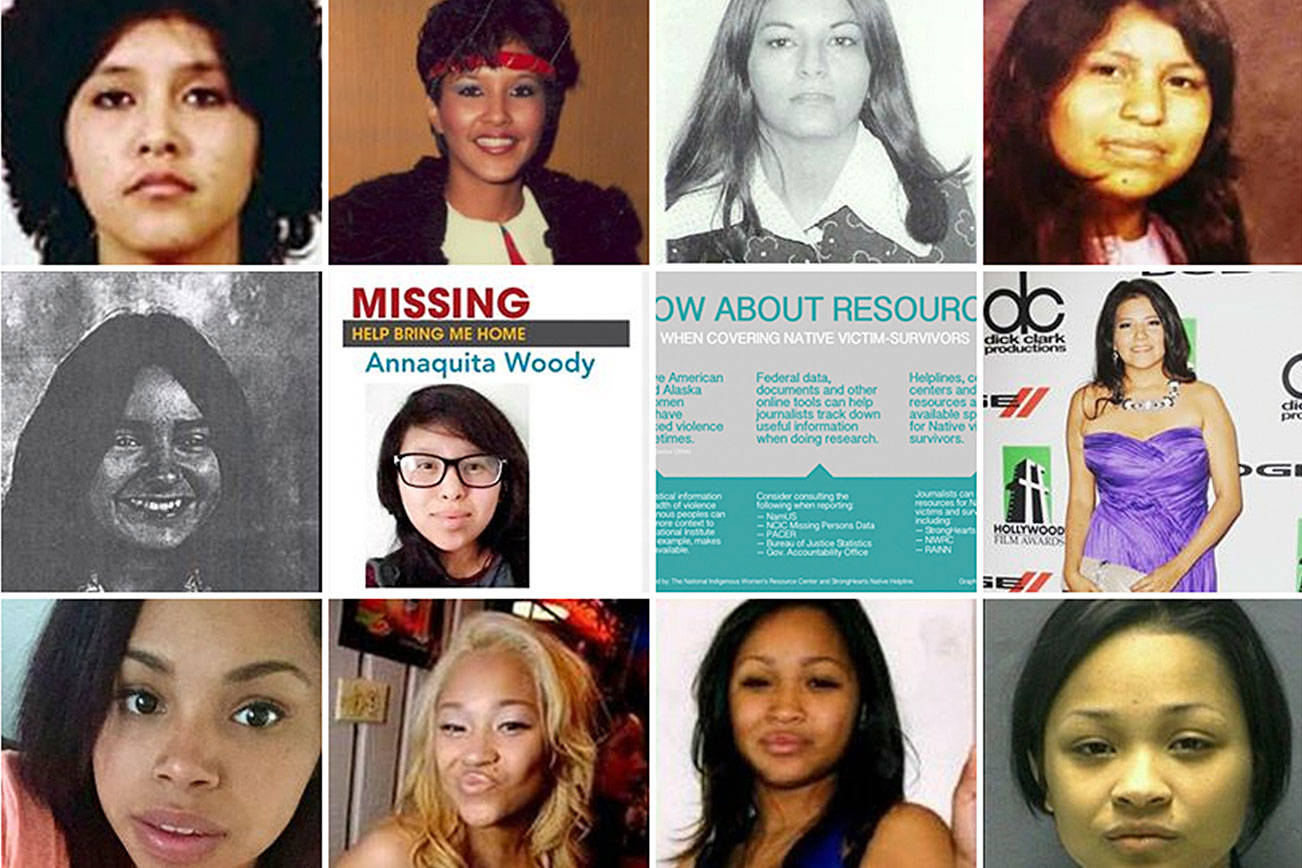On a tree-lined street with a row of pale green condominiums lives a woman we’ll call Nancy (she asked that her name be changed to protect her identity). A registered nurse, she leads a seemingly normal life with her husband, 6-year-old son, and 11-month-old baby in a quiet Sammamish housing complex cradled by the snow-capped Cascade Range. But a few details set this nuclear family apart from their neighbors.
For starters, Nancy arrived in Washington from Hyderabad, India, in March 2011, a month after getting an arranged marriage to her husband, who worked in the U.S. on the H-1B program—a three-year visa for highly skilled workers in specialty jobs. Adjusting to life in America was difficult for Nancy as an H-4 visa holder whose immigration status depended on her husband’s employment. What’s more, the program’s regulations prohibited her from working at the time. Upon boarding the plane to America, she left behind her successful careers as a staff nurse at a cardiology hospital and a clinical instructor in psychology and psychiatry—work that she believed fulfilled her life’s purpose.
“I thought I can work as a nurse,” Nancy says as she places her arms on her dining-room table, a soccer ball resting at her feet, “but when I came to here, my hopes, my dreams, everything came down when I found out I can’t really work.” Wisps of dark hair frame Nancy’s face, a red bindi placed between her eyebrows. As she talks, her son sits on a leather couch behind her, watching TV and eating a bowl of popcorn.
Nancy remained hopeful that she could return to the workforce one day, despite crushing evidence to the contrary. Yet she powered on, opting to begin the laborious process of becoming a registered nurse once again, this time via the U.S. system. It entailed a several-year process of applying for verification, then taking national nursing and English-language proficiency exams, all while she volunteered at Bellevue’s Overlake Hospital Medical Center and reared her first child.
“Since childhood onwards, my passion was to help others. Even my mom said, ‘You have to help others,’ ” Nancy says as she nods toward her visiting mother, who is cleaning in the kitchen. The four “really frustrating” years that Nancy was stuck in the house without a job came to an end in 2015, when the Obama administration introduced a rule that allowed H-4 visa holders to work as long as their spouses on H-1B visas had applied to be a lawful permanent resident. Since her husband had applied for his green card a year earlier, she immediately began working at a skilled nursing facility in Redmond. “I really felt confident about myself. I felt like, OK, I’m right back to my feet again,” Nancy says, clasping her hands.
But the freedom she’s experienced over the past few years could all come crashing down, because the Trump administration announced last year that it would repeal the Obama-era rule. Since 2015, over 84,000 women on H-4 visas like Nancy have been granted the right to work, according to U.S. Citizenship and Immigration Services (USCIS) data. The Department of Homeland Security cited President Trump’s April 2017 Buy American, Hire American Executive Order, which called for a review of the H-1B program, as the motive for rescinding the rule. The rule was set to reverse in February 2018, but the revocation date was later deferred to June.
Yet as the June deadline came and went, USCIS still hadn’t completed the rule-making process. (USCIS officials didn’t respond to Seattle Weekly’s request for an updated timeline on plans to rescind the rule.)
“The agency is considering a number of policy and regulatory changes to carry out the President’s Buy American, Hire American Executive Order, including a thorough review of employment-based visa programs,” USCIS spokesperson Michael Bars wrote in a statement emailed to Seattle Weekly. “USCIS is focused on safeguarding the integrity of our immigration system and ensuring its faithful execution so that the wages and working conditions of U.S. workers are protected. USCIS is committed to reforming employment-based immigration programs so they benefit the American people to the greatest extent possible.”
Amid the multilayered immigration debate permeating the country—which includes the Trump administration’s Muslim ban and “zero-tolerance” family separation policy—many H-4 visa holders at risk of losing their employment authorizations say that their stories are being forgotten. And this is an issue that disproportionately impacts women. According to a recent Migration Policy Institute study, 94 percent of the H-4 visa holders with work permits in early 2017 were women (93 percent of whom originated in India, 4 percent from China).
Advocacy groups created by the recipients of H-4 work permits contend that the visa holders deserve to work when they follow their spouses to the U.S., because they are mainly highly educated contributors to the U.S. economy. Compounding the issue, the per-country limit for immigrants to receive green cards is capped at 7 percent, which creates a bottleneck for Indian and Chinese workers, who are among the most-numerous employment-based applicants. In a February interview, Lokesh Marenayakanapalya of GC Reforms—a national group of Indians advocating for employment-based immigration reform—told Seattle Weekly that over 30,000 people on H-1B visas in Washington state are waiting for their employment-based green cards, and that many of them won’t receive permanent residency for over 90 years, according to current green-card approval trends.
Opponents of the employment-authorization rule blame H-1B workers and their employed H-4 spouses for taking jobs from American citizens. Shortly after the rule that granted employment to some H-4 spouses went into effect, a group of IT workers called Save Jobs USA said that they lost work to H-1B employees. They filed a lawsuit against the Department of Homeland Security (DHS) in April 2015 under the “allegation that its members will face even more competition from foreign workers as a result of the Rule,” the lawsuit stated.
John Miano, attorney for Save Jobs USA, considered the Obama administration’s employment authorization of some H-4 visa holders unlawful because it bypassed Congressional approval, “which is why the Trump administration is trying to gracefully pull it down, rather than have the plug pulled by the courts,” he told Seattle Weekly. “The whole concept of the president unilaterally deciding to allow foreign labor into the United States should be repugnant to American citizens, and we should be screaming over that. That’s something that a dictator does, that’s not something a president does.”
If H-4 visa holders want to work, they should apply for their own H-1B visas, Miano argued. “If the H-1B workers are supposed to be filling jobs that Americans can’t fill, what are the H-4 workers doing?” he questioned.
However, the H-4 visa holders interviewed for this story said that it’s not that easy to receive an employee-sponsored work permit. H-1B visas are awarded every year through a random selection process that is capped at 65,000 workers, along with an additional 20,000 for people with advanced degrees. This year, USCIS received over 190,000 applications, and filled the quota in less than a week after the filing period opened in April.
Miano posited that the quota would not be met so quickly if Congress restricted the qualifications for the H-1B program to only the highest-skilled workers. He claims the mere existence of the H-4 work authorization program is unfair to American workers. “Americans all over the country are losing their jobs and being replaced by H-1B workers … the media doesn’t give a wet fart about it. H-4 workers, the spouses of the replacements, are threatened to lose their jobs, and the American media is all over it. Why is that?”
■ ■ ■
Although the H-4 work authorization program has not existed long enough to examine its effects, Tahmina Watson, a Seattle-based immigration lawyer and founder of Watson Immigration Law, said that “rhetoric that immigrants are taking jobs away is just rhetoric to create fear and anxiety in the broader community.”
In fact, a 2017 study from the Center for Global Development stated that American workers “were better off by about $431 million (or $1,345 per additional migrant) in 2010 because of the H-1B program.”
Nancy rejects the notion that she’s taking a job from an American. Whenever she’s run into her manager in the breakroom over the past month, she says, her employer has been sympathetic to her predicament, insisting that Nancy’s work is needed in the facility. In fact, the national nursing shortage is so pronounced that more registered-nurse jobs will be available than any other job in the U.S. by 2022, according to the American Nurses Association. “We are paying taxes, we are serving the people. And what kind of harm did we do?” Nancy wonders. Her income is imperative to her family, she says, and the work helps boost her confidence.
Revoking the H-4 work authorization would deprive the country of the talents of highly educated immigrant workers, advocates argue. A recent survey created by SaveH4EAD (Employment Authorization Document), a national group of H-4 work permit holders, found that 55 percent of the 2,411 respondents throughout the U.S. have a post-graduate or professional degree and 38 percent have at least a bachelor’s degree. Additionally, 60 percent of them pay at least $5,000 in taxes.
Sam (who also asked for her name to be changed to protect her identity) is one of the highly educated women on an H-4 visa in Washington who fears that her skills will go to waste if she’s unable to continue working. Although she had nearly completed her dentistry degree in Nagpur, India, when she married her husband, Mr. Kukreja (who asked that his first name not be given), in 2011, Sam knew that she would have to enroll in a U.S. dentistry program to practice in Washington after reuniting with him the next year. Mr. Kukreja had moved to the U.S. to work as a software developer at a major retail company in Seattle under the H-1B program in 2010.
Despite knowing she would be unemployed before she arrived, Sam still found it “pretty depressing” to be stuck at home while her husband was at work when she moved to Issaquah in 2012. The disappointment of being unable to use her eight years of dentistry education compounded with the isolation of living in a community where she didn’t know anyone. After all, she’d lived with about 20 members of her extended family under one roof in India for her entire life.
The culture shock was stark. “When I moved here, I was just sitting at home alone,” Sam recalls. The couple decided that they would have their first child in the U.S. and stay in the Seattle-area for a couple of years before moving back to India, so Sam could finally start practicing dentistry. “I want my wife to be happy,” Mr. Kukreja says as he sits across from Sam in a Bellevue Starbucks on a recent Monday evening. “We have 100-plus years of green-card waiting. I don’t think that a spouse can wait for 100 years. It’s more than a lifetime.”
But after two years of volunteering as an assistant at Seattle’s Union Gospel Mission’s free dentistry clinic, Sam saw a possibility to remain in the country and work under the Obama administration’s H-4 employment-authorization rule. Comforted by the job security the new rule offered, Sam took a leap of faith and borrowed a $250,000 personal loan from India to enroll at the University of Washington School of Dentistry in 2015. Mr. Kukreja had already applied for a green card in 2013, so Sam figured that she could easily secure an H-4 work permit by the time she graduated in June 2017.
Additionally, the H-4 employment authorization offered the flexibility that she desired in her career. “With the H-4 EAD, I have the freedom to choose my employer. But with the H-1B, we are restricted to one employer and you don’t get to experience more,” Sam said. She’s now working part-time as an associate dentist at a clinic in Redmond and another in Bothell.
Sam has considered opening a private practice, but the uncertainty of the H-4 permit’s future has stalled her plans. To be safe, she recently applied for an H-1B visa that now puts the future of her career at the mercy of a lottery. But even if she did land an H-1B visa, she wouldn’t be able to achieve her dream of creating her own clinic, and she would be tethered to the employer who sponsored her visa.
Sam is unsure what she’ll do if her current work permit is rescinded and she’s unable to secure an H-1B visa, but she insists she needs to continue working to pay off her school loan and support her growing family. “I don’t want to stay here if I cannot work,” Sam says resolutely. “I’ve spent so much money, and my time, and experience, and learning.”
The couple is also hesitant to remove their 5-year-old son and 4-month-old daughter, both born in the U.S., from their birth country. “My son is so secure, so happy, and so patriotic about America,” Mr. Kukreja said, “but he feels like a guest in India.”
■ ■ ■
Mr. Kukreja, a member of the local GC Reforms chapter, urged Congress to clear the green-card backlog by lifting the 7 percent country cap, which he views as the main solution that could offer relief to him and his family. H.R. 392, the Fairness for High-Skilled Immigrants Act of 2017, and its Senate companion S. 281 would remove the per-country cap for employment-based green cards, but there is currently no movement on either of the measures.
Watson, the Seattle-based immigration lawyer, agrees that Congress needs to take action so that the H-4 work permit can’t be overturned by executive action or the USCIS’s rulemaking process. “But what we’ve seen time and time again is that Congress can’t seem to make any decision when it comes to immigration,” Watson says, citing the lack of congressional action to protect DACA recipients or to end the Trump administration’s recently reversed family separation policy. “If it can’t take action on such urgent, compelling issues, then I simply don’t see them taking any action on high-skilled immigration issues just yet,” Watson says, adding that it is an urgent issue that needs immediate attention. “If you look at your daily life and you just look at your phone, from the hardware to the software … we’re relying on high-skilled immigrants to make our lives functional. And by not looking at the importance of immigrants in the U.S. and the value that they bring to the U.S., we will slowly start losing them, and the effects will be felt in the near future.”
However, U.S. Rep. Pramila Jayapal (D-WA) disagreed that congressional members are the linchpin to retaining the H-4 work authorization, since President Trump is the one who is reversing the rule. “Let’s just not forget that he’s creating the crisis, just as he did with Dreamers and rescinding DACA, just as he has done with the family separations at the border and putting kids in cages and parents in prisons,” Jayapal told Seattle Weekly, attributing the inaction on immigration to the Republican-controlled Congress.
In a bipartisan move, Jayapal, U.S. Rep. Mia Love (R-UT), and a coalition of 130 members of Congress wrote a letter in May that implored the Department of Homeland Security Secretary Kirstjen Nielsen to retain work authorization for H-4 visa holders whose spouses have applied for their green cards. “Providing work authorization for accompanying spouses helps U.S. employers recruit and retain highly qualified employees,” wrote the members. “In addition, a second income can help provide for children’s basic needs and offer such children—many of them American-born citizens or future U.S. citizens—increased opportunities for success.”
Jayapal told Seattle Weekly that she hasn’t given up hope that the Trump administration will retain the rule, although the response to the letter “did seem to indicate that perhaps we would be looking at an unfavorable rule.” She conceded that she has considered legislative options if the work authorization is rescinded, although she declined to give specifics.
In the meantime, Nancy in Sammamish has adopted the nightly routine of checking the USCIS website before bed to ascertain her family’s fate. A wave of relief washes over her every night that she learns that the rule-making process has not been completed yet.
“I thank God like, ‘OK, this week I’m working. This week I’m working’,” she says, as if she were uttering a prayer. “But every night I feel like, ‘What happens if the next morning the rule is passed? What is my future going to be, and what is my family’s future?’ ” They wouldn’t be able to afford their condominium’s $2,000 monthly rent if Nancy’s husband was the sole breadwinner, so her family would likely have to move back to India if her husband isn’t granted a green card. But the thought of returning to India with children who are American citizens also poses a series of conundrums that the family would have to figure out.
“I don’t know what to do,” she quietly responds when asked if she and her husband have formulated a plan in case her work authorization is rescinded soon. If she moves back to India, she fears she wouldn’t have anything to show for her time in the U.S. Investing in a deferred American dream has meant that Nancy’s family doesn’t have any property to return to in India. “Whenever I think about my future, I want to look at my kids,” she says. “[Just] as every parent in any country, what [will they] be thinking? They want to give the best to their kids. And my husband and I just want to give it to them too.”
mhellmann@seattleweekly.com

